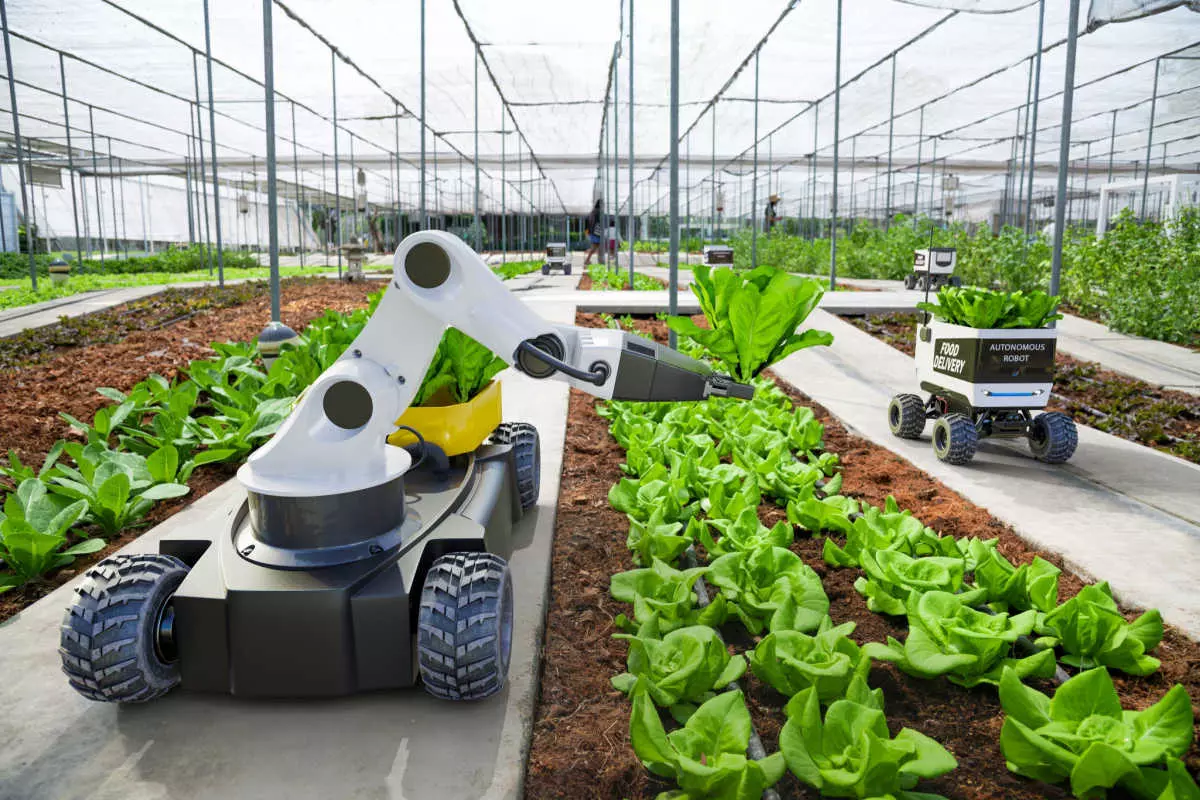How AI in Agriculture Solves Traditional Farming Issues
Agriculture is one of the oldest industries in the history of mankind. And as it still provides the highest number of jobs in some countries, the industry keeps evolving to become more efficient and productive.
Today, farmers face multiple day-to-day issues, from failure to identify crop problems on time to irrigation inefficiencies. However, many of these problems are already being tackled with the help of AI in agriculture. Artificial intelligence can change our perception of agriculture, revolutionizing farmers’ jobs to help them achieve greater results with less input.
In this blog, we will explore current challenges that farmers face and how AI can be used in agriculture to solve those issues. Read on to learn more.
Challenges in Traditional Methods in Farming
Farmers face different challenges throughout the entire farming lifecycle – from getting the soil ready to harvesting and storage. While some issues are beyond their control, others can be avoided with the right technology. That said, these are the main obstacles in traditional agriculture:
- Frequent weather changes. While the weather can significantly help farmers grow their crops, it can also be their biggest enemy. Extremely hot or cold temperatures, deforestation, and pollution can destroy or seriously damage crops.
- Erosion and lack of fertilizers. Soil can erode if it’s not properly taken care of. The soil needs three nutrients to stay healthy – nitrogen, phosphorus, and potassium. Failure to supply the soil with these nutrients on time and in the correct quantity can lead to poor crop quality.
- Failure to meet demand. Because some tasks like planting seeds and cultivating crops take a lot of time and labor, farmers fail to meet the population’s demand. As the world population is forecasted to reach nine billion by 2050, agricultural production should be increased by 70% to meet the ever-increasing demand. And the only way to do it is by adopting emerging technologies such as artificial intelligence and machine learning.
- Irrigation inefficiency. Many modern-day farms lack a sustainable irrigation system. Watering the crops on time and properly is crucial for harvesting healthy crops.
How AI Helps in Agriculture
Machine learning and artificial intelligence models provide solutions to many of the problems listed above. In fact, many farmers have already started implementing AI technology in their operations, and the results look promising.
In this section, we look at real-life examples of using AI in agriculture.
Automatic Weeding and Harvesting
Removing weeds and collecting crops require extensive manpower and resources. As a result, companies have developed AI-powered robots that help humans cultivate and harvest crops. They are also used in packing and storing food production.

These machines go throughout the field and remove harmful weeds. Agricultural robots use artificial intelligence to locate weeds with the help of attached cameras. Once they identify the weeds, they use laser beams to destroy and eliminate them.
Similarly, AI-powered robots are used in cultivating crops. The robot goes through the field and identifies fruits and vegetables that are ready to be picked. Machine learning algorithms use historical data to target only ripe crops with the help of cameras. In recent years, these machines have been used intensively in collecting peppers, lettuce, tomatoes, apples, and other fruits.
Predicting the Requirement of Pesticides
The FAO reports that up to 40% of crops are lost due to pests every year. AI software is programmed to predict when and how likely pests are before they infest crops. Additionally, AI identifies the right amount of pesticides to apply to crops, as using an excessive amount of pesticides can harm crops.
Precision pest management can be performed using AI-built drones. These unmanned aerial vehicles (UAVs) fly above the field and spray pesticides or weedicides where needed. Drones are designed to spray the right amount of pesticides in the right places, something that can be incorrectly performed due to human error.
Forecasting the Weather
Artificial intelligence also protects crops from poor weather conditions. Crops become brutally damaged from heavy rain and hail, and without prior warning, farmers don’t have time to shield their fields from severe weather fluctuations.
The Internet of Things (IoT) is a system of interrelated computers and objects that transfer data and information without human intervention. With the help of the Internet of Things, farmers can now monitor weather conditions in real time and receive insightful information about forthcoming weather conditions.
For example, these devices can monitor temperature, humidity, wind speed, and air pressure. In turn, this data provides farmers with more information and time to strategically prepare their crops for harsh weather by setting up covers and protection.
Plant Disease Detection
Many artificial intelligence apps allow farmers to detect infected plants and take measures to treat them before they become obsolete. These applications use image recognition technology that captures the image of plants and processes information about possible diseases, methods of control, and treatment.
An example of these applications is the plant diagnostic apps. They have a large databases of images of infected plants. The AI algorithm uses this data to diagnose sick tomatoes, lettuce, melon, squash, and other crops and offer treatments.
Precision Farming and Predictive Analytics
Precision agriculture or precision farming is a management technique that relies on real-time data and responses to variability in crops, fields, and animals. Combining precision farming with artificial intelligence can provide farmers with guidance about proper water management, irrigation, nutrition deficiency, and pest attacks.
Adding AI to precision farming lets farmers grow more crops with fewer resources. It combines the best soil management practices with the most effective data management practices to help farmers reduce their costs and maximize profits.
Future of AI in Agriculture
Unlike medicine or banking, agriculture was one of the last industries to catch up with emerging technologies. However, the future of AI in agriculture looks promising. Will we see robots and drones taking over all human jobs eventually? This is highly unlikely, as human knowledge and intervention will still be needed to manage these machines.
On the other hand, we can expect to see agriculture and AI team up on other grounds. For instance, many more farmers will adopt a data-driven approach and AI-powered tools. Additionally, newer developments in precision farming will improve the quality of the overall harvest and make agriculture a less labor-intensive industry.
Bottom Line
In conclusion, artificial intelligence in agriculture doesn’t only help farmers use fewer resources to grow crops, but it also improves the quality and health of their crops. Current technologies can perform human tasks like disease diagnoses and crop cultivation much more quickly and efficiently. In the near future, these technologies will most likely spread around the globe, allowing farmers to meet the growing demand in agricultural production.



